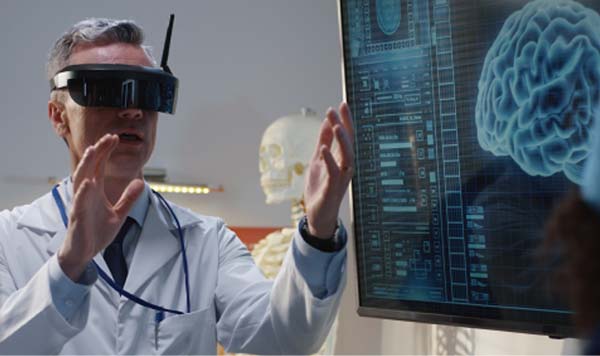Overview
Most patients are left in the dark with anxiety upon hearing an expected health issue. This is especially so when a doctor explains a recommended surgical approach using the black and white MRI or CT images that is practically unrecognizable by the patient to make a decision. Thus, a visual solution developer created a revolutionary visualization platform which reconstructs the traditional 2D medical images into a 360° 3D virtual reality (VR) model allowing the patient to see exactly what and where their illness is and be guided through the planned surgical steps in an experiential preview.

Inspired by flight simulator systems, the invention of the 360° 3D medical visualization platform provides a tool to ease the patient's anxiety with increased understanding and trust. It also provides a surgical simulator to assist the training of residents, as tutors may use the VR system to walk the residents through surgical procedures and allow rookies to practice in an immersive interactive environment.

The visual solution provider has created two machines to implement their innovations. One is a virtual reality (VR) machine which converts 2D images such as MRI, CT, and DTI into a 3D model. It also allows viewers wearing a headset to see the targeted area from all angles in a 360° 3D environment. The other is an actual reality (AR) machine which synchronizes with an ongoing surgery and overlays the surgeon’s microscope eye piece with semi-transparent 360° VR objects to help the surgeon develop an insight which is impossible to achieve with the naked eye and traditional medical microscopes.
In the past, some tumors are difficult to locate and identify in traditional 2D imaging. Now with 3D VR technology, they can be seen clearly from all angles. The VR system also provides simulated process previews for surgeons to rehearse and optimize their surgical plans. There may be different approaches to access the site of surgery, and now with the VR technology, a surgeon can explain to a patient on why a particular approach is chosen for him/her. On the other hand, the AR machine allows surgeons to gain a 3D insight during surgery.
Challenges
- Processing power and small enough to fit into equipment
However, the realization of this new technology requires a computing platform with exceptional graphic processing power to execute the VR/AR algorithms designed by the solution developer. At the same time, the computer must be small enough to be placed inside the equipment. - Thermal considerations
Being a high-tech imagining equipment, it will be packed with various components that may generate heat, hence thermal ventilation may be an issue that need to be considered. - Mobility and reliability
To move about on the hospital floor and push it from operating rooms and also patients' bedsides, the AR/VR machines are designed to be mobile, which means the embedded computing system has to be shock and vibration resistant to a certain degree.
The Solution and Neousys' Role
Neousys' Nuvo-9166GC industrial-grade GPU computing edge AI platform, features a powerful CPU and dedicated graphic processing power as well as exceptional compact and robust designs. It is chose as an embedded system for the sync AR module to overlay surgical microscope eye pieces with VR objects in real time.
Advantages of Neousys Nuvo-9166GC
- Supports an Intel® 14th/ 13th/ 12th -Gen Core™ CPU that features hybrid architecture with 24 cores/ 32 threads to significantly boost processing computation.
- Qualified to support NVIDIA® L4 inference accelerator that is based on NVIDIA® Ada Lovelace architecture with excellent enery-efficiency. It offers up to 30 TFLOPS in FP32 or 485TOPS in INT8.
- With unique Neousys thermal design, a Cassette module segregating the inference accelerator and the main system, the computer is capable of true wide temperature operation ranging from -25°C to 60°C rugged operations.
- Compact and reliable designs including patented anti-shock and vibration mechanisms allow Nuvo-9166GC to deliver AI-inference processing in a 240 mm (W) x 225 mm (D) x 110.5 mm (H) size and make it an ideal choice for mobile equipment.






